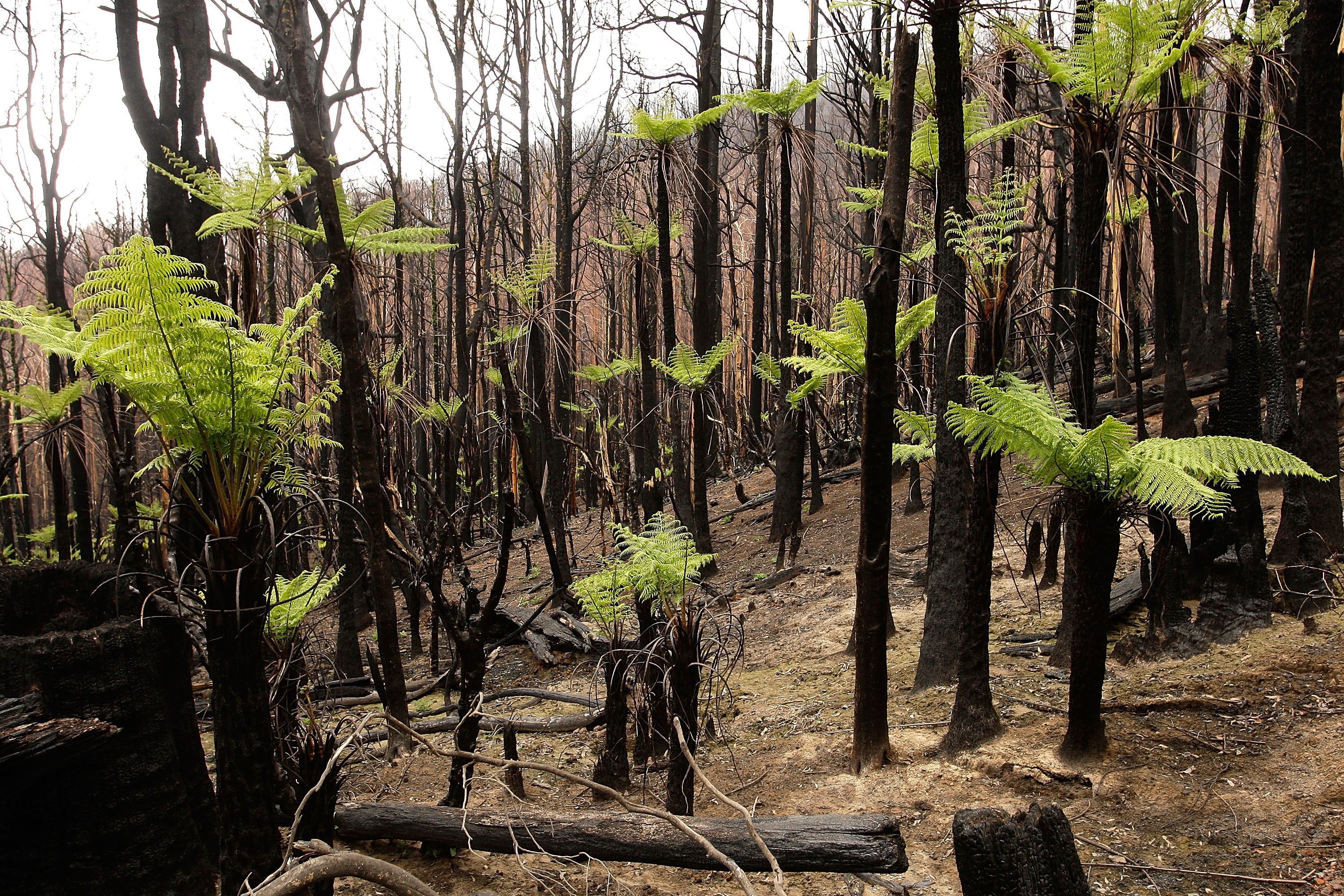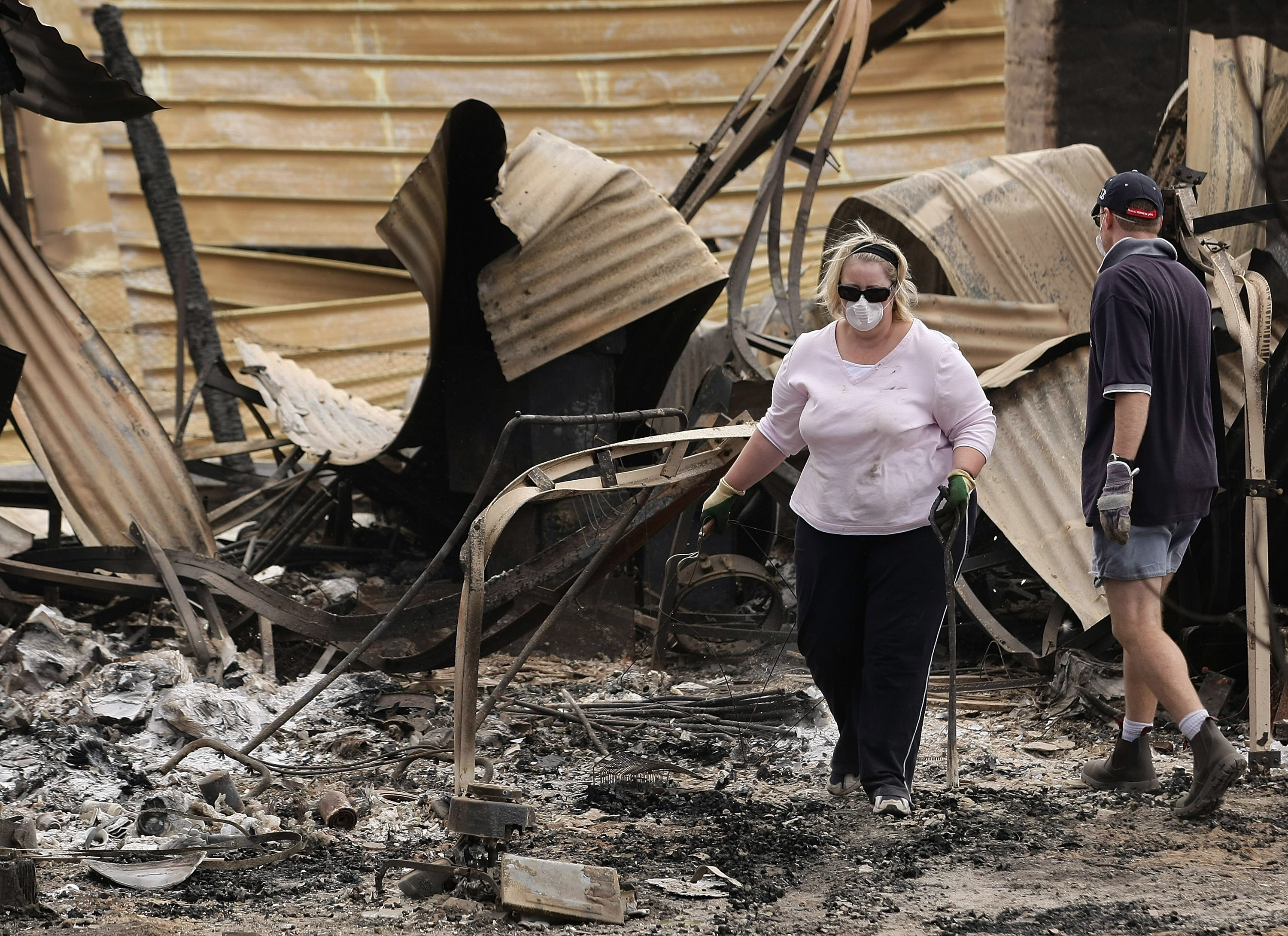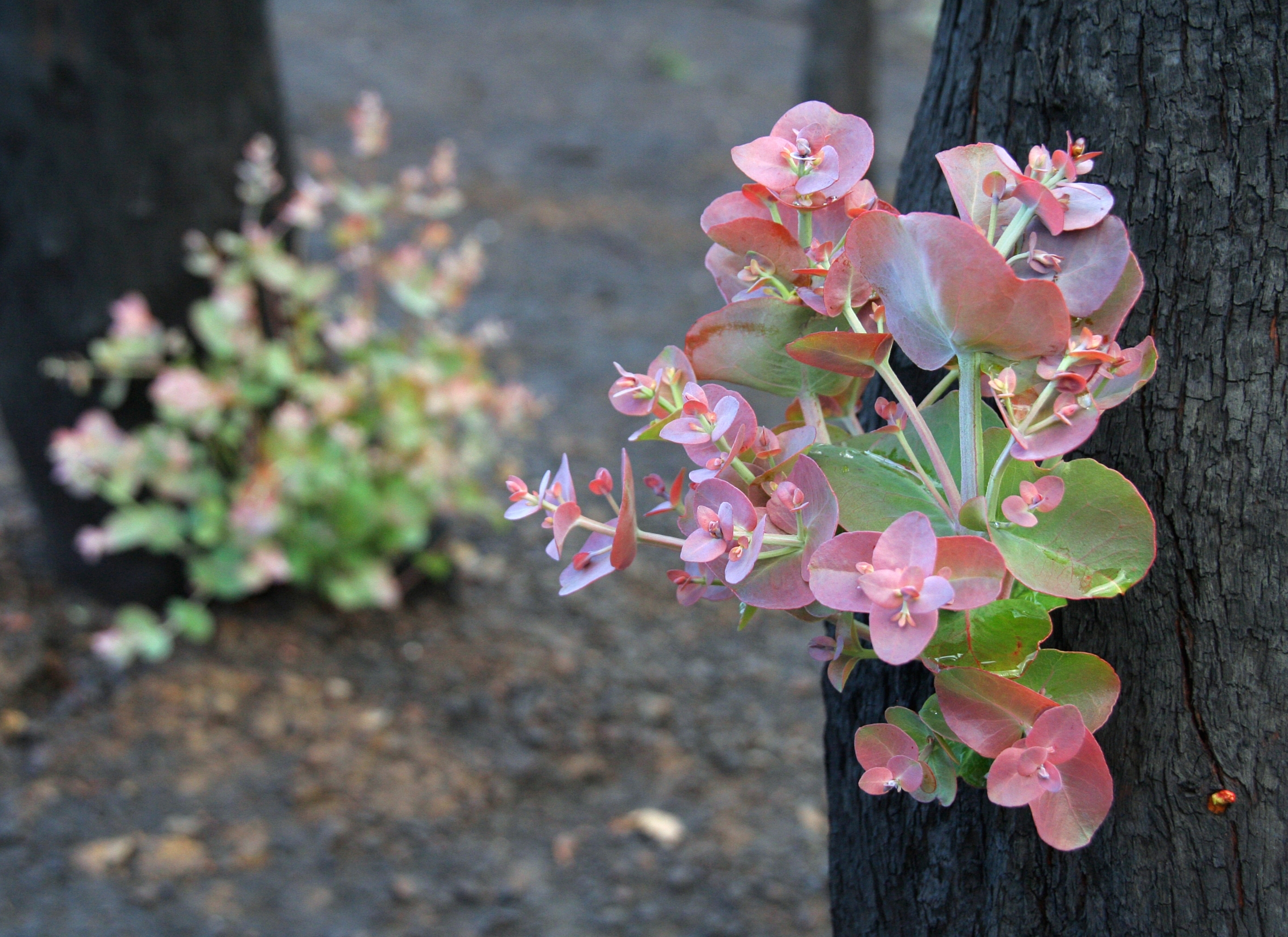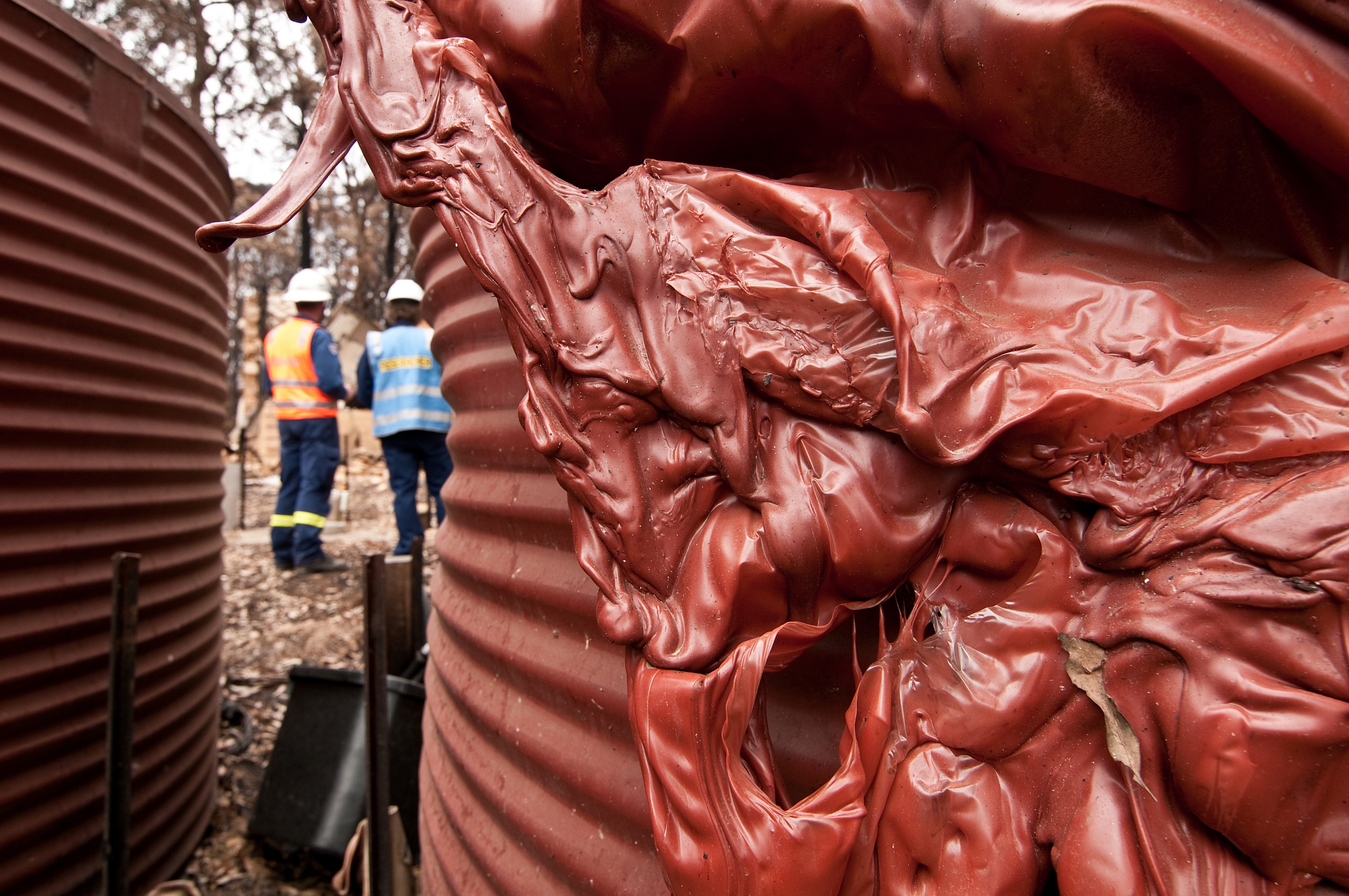
Health & Medicine
Helping survivors overcome disaster trauma

Six-year study of mental toll from Australia’s worst bushfire shows social ties are key to resilience and recovery
Published 28 November 2016
Survivors of the Black Saturday bushfires in Victoria were still suffering mental health disorders at rates sometimes twice the general population five years after the disaster.
But one of the world’s largest longitudinal studies of the mental health and social connections of disaster survivors has also uncovered clear evidence of what helps people to cope, including that the more social ties people have the more resilient they are.
The six-year Beyond Bushfires study, led by the University of Melbourne, surveyed over 1000 survivors of the 2009 Black Saturday bushfires that claimed 173 lives, including 35 children, making it the worst recorded bushfire disaster in Australian history. It caused an estimated $4 billion worth of damage.

The persistence of increased mental health problems five years after the fires makes clear that mental health support planning for disasters needs to be in place for the long term. It also shows for first time how social conditions can support or hinder a survivor’s mental health.
There is evidence in the study that membership of community groups helps people’s resilience in the face of disasters. It also provides new evidence on the pros and cons for mental health of staying in a disaster-hit area to rebuild or starting afresh somewhere new. The study even shows evidence that watching the bush grow back can help people recover.
“Previous disaster research has focused on individuals and the short term after a disaster, but we have looked out over five years and examined the interplay between individuals and social factors and community influences,’’ says lead researcher, Associate Professor Lisa Gibbs of the Melbourne School of Population Health. “We know it makes a difference, but we haven’t understood how it works.
“What we have shown now is that the mental health and social impacts of the disaster were much higher and more extended than people ever realised, and that social influences are critical in whether a person has poor mental health outcomes.”

Health & Medicine
Helping survivors overcome disaster trauma
The study surveyed online or by telephone 1056 people within the first four years of the disaster, and then followed up with 736 participants in 2015. The researchers also carried out in-depth interviews with 35 participants.
The study team comprised 20 researchers from the University of Melbourne, Flinders University, Red Cross Australia, Swinburne University of Technology, University of NSW and University of Sydney.
The interviews reveal the harrowing mental toll of the disaster. “I went to four funerals in that week and there were two I didn’t get to go to because I was at others … And none of those first four were for one person,” one interviewee told researchers.
“All of them were for multiple people, and I had never been to a funeral for more than one person ever, and I went to four in a week and I remember just feeling like … you were swimming underwater.”
Among the study’s key findings are:
Rates of mental disorder, such as post traumatic stress disorder, severe psychological distress and depression, were running at 26 per cent among the 630 participants from the worst-hit areas three to four years after the fires. That compares with “normal” rates of about 10 per cent. After five years this had reduced to a still high 22 per cent.
Among the 182 participants from areas where there were relatively few or no deaths, but which still suffered extensive property loss, the rates of mental disorder were 17 per cent three to four years after the fire. These dropped to 10 per cent after five years. Among the 205 participants from nearby areas where there was little impact from the fires, rates of psychological disorder were 17 per cent after three to four years, but improved to 5.6 per cent after five years.
Being close to more people and involvement in community groups was one of the strongest predictors of better mental health outcomes. However, the researchers found that there is a point when people can be members of too many community groups and it starts hurt their mental health. This ranged from being a member of anywhere between three to eight groups, depending on an individual’s circumstances. Also the study warned that much of the burden for sustaining such groups can fall on just a few individuals, and they can suffer from doing too much.

Survivors who had lost people in the fires were more likely to have poor mental health outcomes. In all 294 participants, or 28 per cent, reported having lost someone close. Of these, eight reported losing immediate family. Given that so few people who had lost immediate family participated in the study, Associate Professor Gibbs says it is likely the results underestimate the mental impact of the disaster.
Over half of the participants reported being separated from loved ones during the fire, and of these almost a third didn’t know the fate of loved ones for 24 hours or more. The mere fact of being separated for a time from a loved one was a predictor of poor mental health outcomes, particularly for those identified as having an anxious approach to relationships where they worry a lot.
There was little difference in outcomes between people who stayed in affected areas to rebuild their lives and those who left, but the experience was very different. Those that stayed benefited from being connected to community, but suffered mentally because of difficulties over accommodation, finances and relationships. In contrast, those that left suffered because of the loss of connection but were less impacted by finances and relationship problems.

The study also revealed the importance of the environment in helping people to cope. The researchers were surprised that almost all interviewees were quick to talk about the importance to them of the state of the bush around them.
“When we interviewed people one of the first things they wanted to show us was the trees,” says Associate Professor Gibbs. “Some would talk of feeling a link between seeing the regrowth and their own recovery.”
The study’s clear policy implication for government is that mental and social support services need to be in place for survivors for the long term, says Associate Professor Gibbs. Opportunities also should be expanded for people to build social ties to their communities.

Environment
Learning to learn from bushfires
“There needs to be support for building social networks and community groups because they are incredibly powerful. Support isn’t just about individual mental health, so we need a spectrum of support and in the case of resources for community building we can cost effectively make a big difference.”
Among the key policy recommendations are:
Emergency Management Victoria should include psychosocial recovery up to five years post-disaster in its Relief and Recovery Reform Strategy.
There should be investment in promoting and supporting community groups.
Establish a Communication Register that people who relocate can use to stay informed about services. Such a register could perhaps be coordinated through the Red Cross Register Find Reunite Service.
More services in post-disasters should be focused on affected parents and children. For example, increased childcare can help parents participate in community rebuilding activities. Interventions need to be targeted at helping children feel safe and stable. This may include involving them in age-appropriate ways in preparedness or recovery activities.
Responding services should have training in identifying survivors who may be particularly at risk of mental health disorders, such as training through the Phoenix Australia: Centre for Posttraumatic Mental Health.
According to the Red Cross, in 2014 some 141 people in Australia were killed by disasters and 52,000 were affected. Disasters are sudden calamitous events that go beyond the ability of the local community to cope. In the period 2010-2015 there were 219 natural disasters in Australia that triggered the Australian Government Natural Disaster Relief and Recovery Arrangements, an average of one every 8.33 days.
“Australia is prone to natural disasters like bushfires and because of climate change they are going to get worse in their frequency and severity, so it is urgent that we better plan for the mental health consequences of disasters,” Associate Professor Gibbs says.
The study was funded by an Australian Research Council Linkage Grant. It involved 11 partner organisations: Victorian Department of Health, Australian Red Cross, Australian Rotary Health, Australian Government Department of Human Services (Centrelink), Phoenix Australia: Centre for Posttraumatic Mental Health, Central Hume Primary Care Partnership, Bendigo Loddon Primary Care Partnership, North East Primary Care Partnership, Outer East Primary Care Partnership, Central West Gippsland Primary Care Partnership and Lower Hume Primary Care Partnership.
Banner Image: New tree growth sprouts in Marysville three months after the Black Saturday bushfires. Picture: Lucas Dawson/Getty Images